There are several ways to handle your weekly reporting, with everything from email threads to shared Google Drives or OneDrive folders.
But there are fundamental challenges that occur with almost any system you’ll create:
- Reporting can take a lot of time out of your team’s day. Time they’d rather spend on more pertinent tasks.
- It’s easy for your team to forget to send in their report. Work calendars quickly fill up, and team members can often get in the habit of pushing their reports back. This does two things: (1) It makes them less likely to finish the report; (2) It makes their report rushed/ not up to par.
- When you do get your reports, they’re not very accessible. Weekly reports should be easy to reference, share, and leave feedback on.
You can solve these very common issues with Geekbot, our free weekly reporting tool.
Geekbot works with both Slack and Microsoft Teams, so your team can complete their weekly reports with tools they use daily:

Also, Geekbot is completely free for teams of 10 or fewer participants. (Larger teams can get Geekbot as low as $2.50 per user per month.)
Getting Started with Geekbot’s Weekly Reporting Tool
Below, we look at how you can use Geekbot as a free weekly reporting tool.
However, our customers use it for a variety of use cases, from:
- Running standup meetings and retrospectives.
- Sending out surveys in Slack and MS Teams.
- And more.
First, Schedule Your Weekly Report
With Geekbot, you can customize when your team gets sent their report questions and at what frequency, i.e. whether the report happens daily, weekly, every other week, and so on.
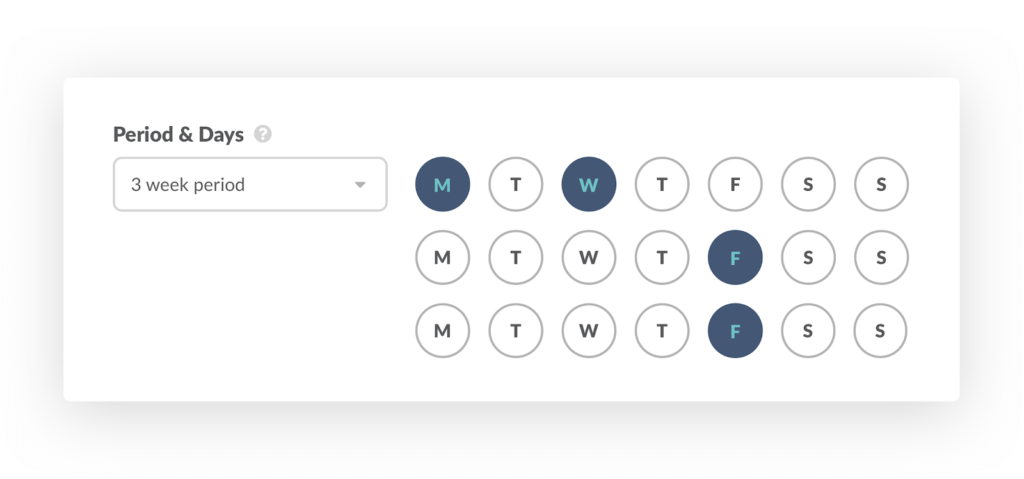
Plus, you can tell Geekbot to factor in every user’s local timezone.

Let’s say your marketing team completes reports at the end of each week. You would set up Geekbot to send out a weekly report invite on Friday in the morning (giving your team time to complete their report). Then Geekbot would send the report questions to everyone on the team on Friday at 9:00 AM their time.
Second, Customize the Weekly Report Questions
Geekbot will default to the questions below when you’re building your weekly report.
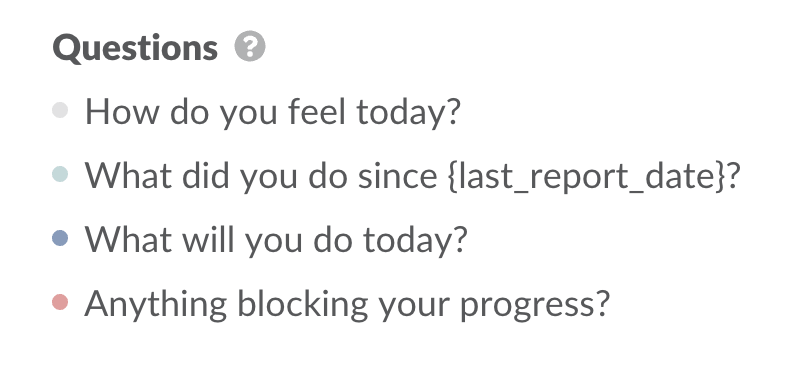
These are the common daily standup questions. If you want something different, you can easily customize the questions above, modify the wording or remove them completely and add new ones.
You can also choose how your team can respond to each question, by picking the answer type.
- Plain text: This response type is perfect for when you want your team to provide an answer in their own words, like when you’re asking how they felt this week at work or trying to understand their mindset better.
- Numeric: Numeric responses are great for when you want a more quantifiable response. For example, asking your team to rate company culture on a scale of 1-5 or asking them to give you a % of how much time they spent on more menial tasks like updating spreadsheets and calendars.
- Pre-defined: Let’s say you want to schedule an all-hands-on-deck meeting the following week. You can send a question such as, “What day works best for an all hands on deck meeting?” and give your team pre-defined answers to choose from, such as “Monday” and “Tuesday.”
Third, Collect Your Team’s Responses
Geekbot will reach out to your team — via a direct message — when it’s time for them to fill out their report. Plus, your team has the option to tell Geekbot to follow up with them later in the day if the answers are not completed.

That’s a game changer for teams who are struggling to get staff to turn in their reports on time, or at all.
After someone fills out their weekly report, Geekbot will take their responses and share them in whatever channel you choose (public or private).
Here’s what it looks like when all the responses get posted in a public Slack channel where team members can interact with each other’s reports. (Although answers can also be kept private.)
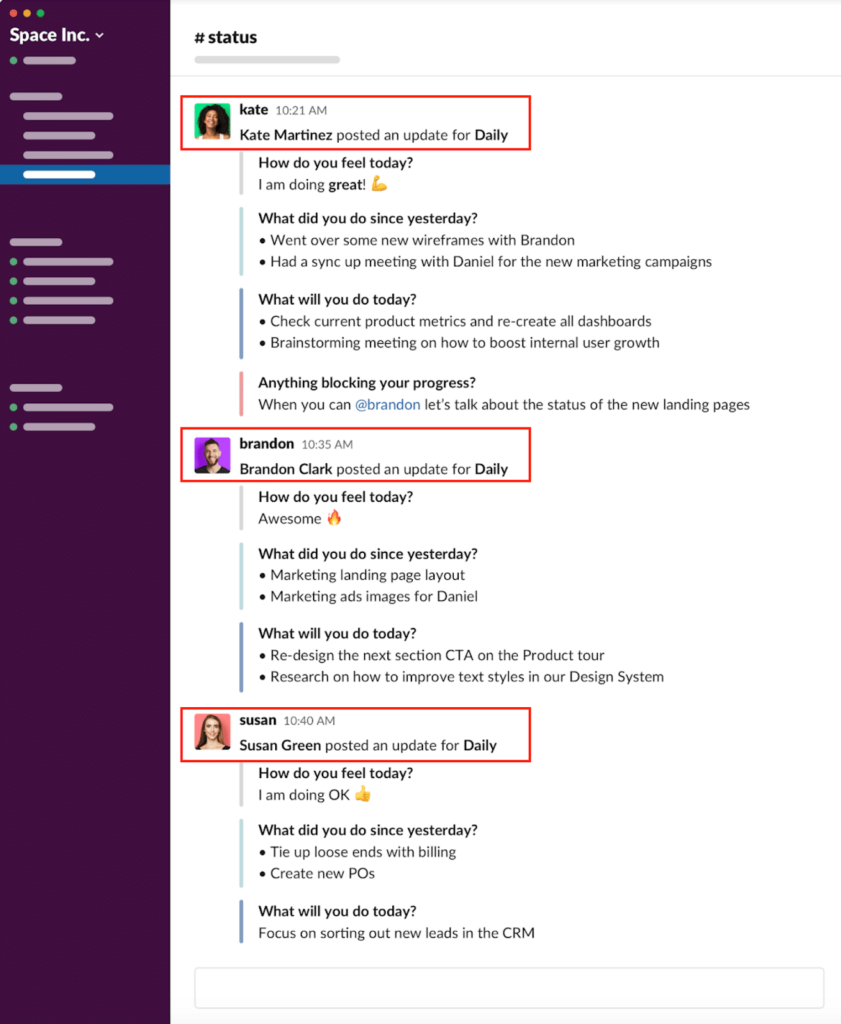
Having the reports posted like this increases transparency and collaboration.
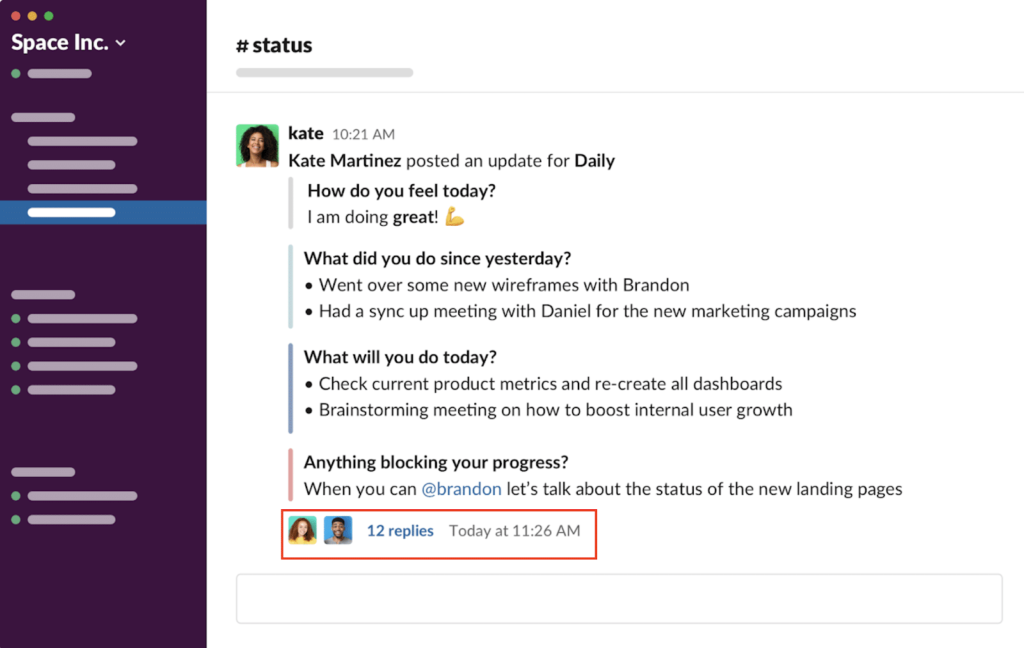
In the image above, Kate tagged Brandon with a question. Brandon then responded to Kate’s update by making a thread. Now they can work together to solve the problem without notifying and disrupting others.
How to Use All the Information Shared in Your Weekly Reports
There’s an under-discussed disadvantage to running your weekly reports in tools like Google Drive and OneDrive — all that valuable information is hard to extract or reference down the line.
But in Geekbot, you can use your account’s dashboard to get valuable information, including:
- Participation percentage: How many people on your team are completing their reports.
- Team happiness graph: Get a quick check-up on your company culture.
- Answers to previously sent out surveys: You can look at all the answers to previously filled out surveys/meetings. To make it easier to find what you’re looking for, you can filter by date or type in a specific keyword.
- Highlighted reports: See which weekly report is getting the most attention from everyone on the team.
- Out of office: Missing a weekly report? Quickly see if someone is out of office, i.e. didn’t send in a report that week.
- And more.
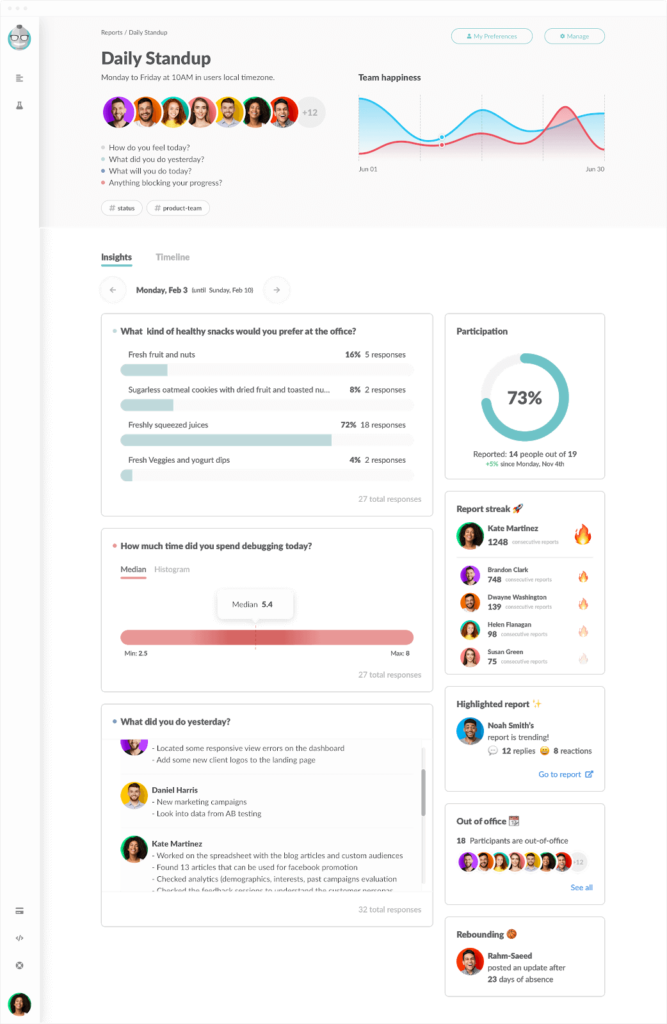
Finally, let’s say you have a question related to the weekly reports, such as, “Which tasks related to onboarding has each team member completed in the last two months?”.
Per the below image, instead of wasting time filtering through pages of reports, Geekbot will automatically analyze past answers and give you a quick answer.
Here’s an article that further explains how you can directly ask Geekbot questions.
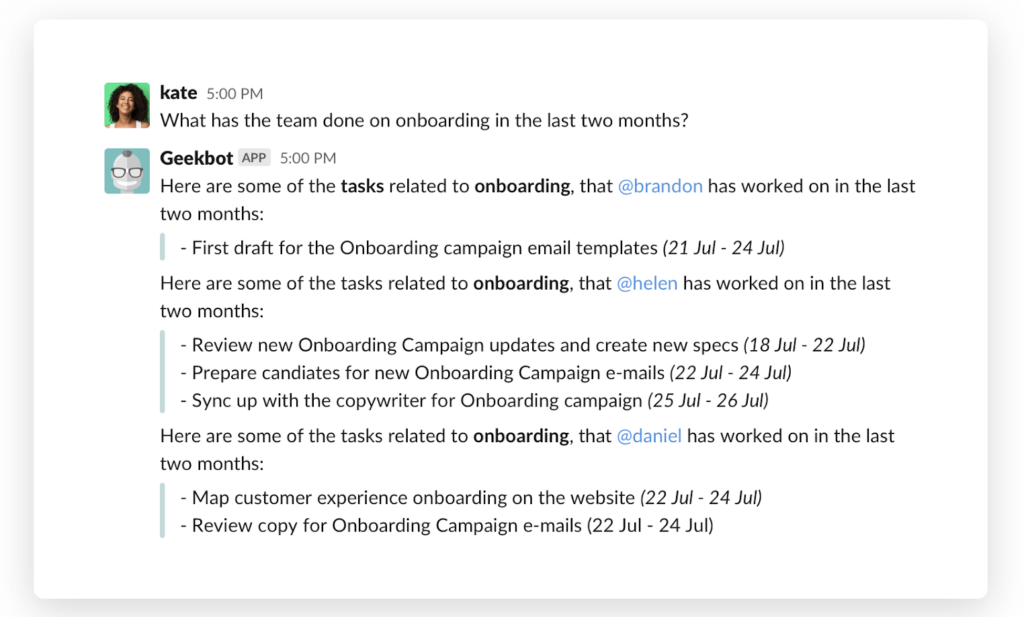
Getting started with Geekbot: Geekbot is completely free for teams of 10 or fewer participants. As of this writing, if you have more than 10 users, then there are two pricing plans.
- $2.50 per user per month (when paid annually).
- $3 per user per month (when paid monthly).
All plans come with the same level of functionality. And Geekbot integrates with both Slack and Microsoft Teams, so you can easily get started today.
You may also like:
- The Best Project Management Tools
- How to Run Weekly Status Updates in Slack or MS Teams
- The Best Way to Run a Remote Check-in
- Free Daily Huddle Template (with Excel and Google Sheets available to download)
- How to Measure and Achieve Success through KPIs and metrics
- Tips for Effortless Task Management in Slack (including key integrations you must try)
- How to collaborate in real time without time-draining meetings
- 4 Types of Survey Bots that Help Increase Employee Engagement
Frequently asked questions
What is a Weekly Status Report?
A weekly status report is a progress report for the work your team has done over the past week.



